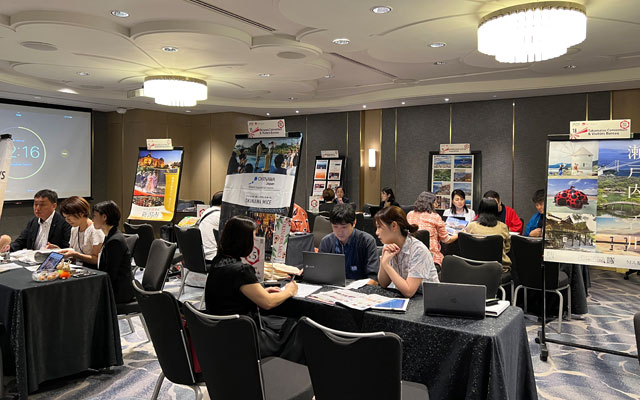Lesser-known destinations around Japan were out in full force at JNTO (Japan National Tourism Organization) Incentive Travel Business Meetings last Thursday (August 31) in Singapore, meeting with Singapore-based incentive companies to attract more groups through various subventions and marketing support.
Participating bureaus included the Shizuoka Convention Bureau (Suruga Marketing & Tourism Bureau), Fukui Prefectural Tourism Federation, MICE Promotion Council of Ibaraki, and Chiba Convention Bureau. Suppliers such as domestic chain Oriental Hotels & Resorts, Tokyu Hotels & Resorts, and VMG Hotels & Unique Venues were also in attendance.

A JNTO spokesperson said: “One of Japan’s strengths is that there are many cities other than Tokyo that have sufficient capacity to conduct MICE. According to the ICCA statistics for 2022, 17 Japanese cities were ranked within the top 100 cities for number of in-person meetings in the Asia-Pacific region.”
The spokesperson added: “Japanese suppliers have a growing desire to attract more incentive tours, which tend to have higher spending than general leisure tours. Almost every month, there are incentive trips to Japan from Singapore, while incentive groups from other South-east Asian countries like Malaysia and Indonesia are also steadily increasing.”
As such, JNTO’s Incentive Travel Business Meeting event will be held in a total of seven cities – Seoul, Singapore, Manila, Kuala Lumpur, Hanoi, Taipei, and Bangkok – from now until January 2024.
JNTO will also be exhibiting as ITB Asia in October 2023 in Singapore, as well as AIME in February 2024 in Melbourne. Also upcoming is the Visit Japan MICE Mart in Osaka in October, where 13 companies from South-east Asia have been invited to participate. In January 2024, JNTO will also be conducting a fam trip for travel agencies in South Korea and Taiwan.
Although the push to move visitors out from Japan’s main cities is evident, buyers at the event shared various challenges when planning for corporate events to other locations.
Theresa Lee, director, M+i Journeys, told TTGmice: “My programmes last about four to five days, so it’s difficult to visit more than two cities. We’ve tried a few times to propose places further afield, but we still fall back to places like Lake Kawaguchiko, which is within a two-hour radius from Tokyo.”
Budgets are also a factor, and with rising costs, price points in the more popular outskirts like Hakone can be more expensive compared to Tokyo, where there is a lot of competition. There also needs to be enough activities to entice clients.
“I actually proposed Ibaraki Prefecture to one of my clients, but they rejected it as they did not want to travel an extra 90 minutes (from Tokyo airport). Another reason for the rejection was that Ibaraki lacks in night-time activities, as compared to neighbouring Tokyo,” she elaborated.
Clients that would resonate well with secondary cities, Lee opined, would be the younger, repeat visitors with larger budgets, and are travelling in a group size of no more than 30.
Felicia Teng, general manager of The Meeting Lab, agreed: “Secondary cities in Japan have a lot of MICE potential, and I would recommend it for groups numbering no more than 50 people.”
Teng added that corporate trips – because of their short timeframe – are usually only able to offer a brief taste of the destination, and most times, her clients will opt to revisit on their own leisure trip in the future.
When asked if the travelling time is off-putting to her clients, Teng noted: “In terms of the total number of travelling hours, travelling time from Singapore to Nagasaki is almost the same as travelling from Singapore to downtown Tokyo. I just have to ensure I can show this to my clients as a reason to take them out of Tokyo. There is also a great disparity (in terms of costs), and I can use the savings to beef up the programme instead.”





















